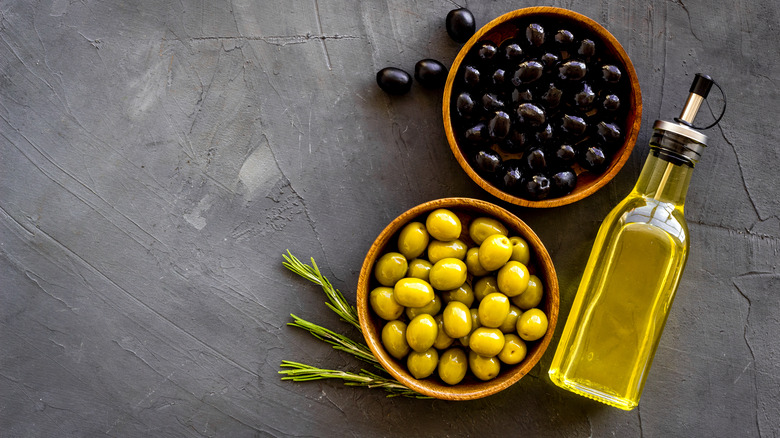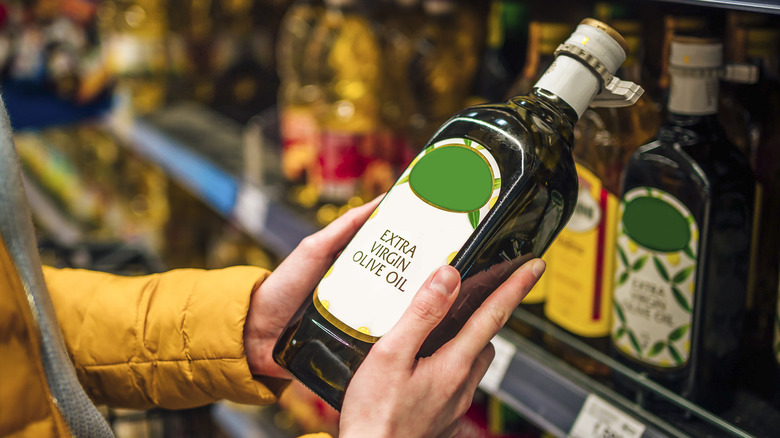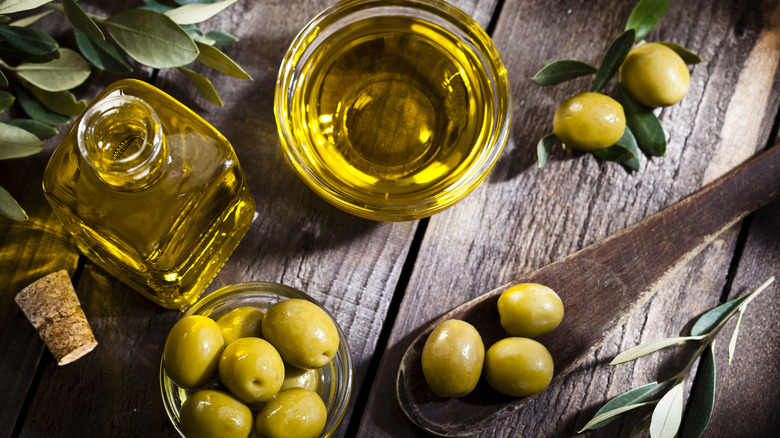How Legit Is The Refrigerator Test For Olive Oil?
If you're an active viewer of food content on social media, chances are you've seen the infamous "refrigerator test" for extra-virgin olive oil (EVOO). The test works like this: Pour some of your cooking oil into a container, and leave it in the fridge overnight. If by the next day the EVOO remains clear, then it likely has lower-grade oils added in. Many home cooks swear by this trick, but just how effective is it at testing the quality of your cooking oil?
Not very, it turns out. Most cooking oils begin to solidify under cold storage, making the refrigerator test unreliable for verifying whether a manufacturer has mixed your EVOO with a lower-grade liquid. For example, peanut oils, which are generally sold for less at grocery stores, also change in consistency under cool temperatures. Lots of factors can actually affect the exact temperatures at which an EVOO begins to solidify, including the region and specific climate each harvest was grown in. Thinking that all olive oil varieties are the same is generally considered one of the many mistakes home cooks make with this ingredient, so don't expect all bottles to behave the same in the refrigerator.
Why are so many people testing their olive oil?
While it might seem odd at first glance, people have legitimate reasons for testing the efficacy of their cooking oils. Over the past few years, climate change has considerably reduced olive oil production. This has not only led to a surge in the price of EVOO, but has also caused some manufacturers to illegally mix lower-grade cooking oils into bottles marked as pure.
Although the olive oil refrigerator test has been around for a while, many social media users are revisiting this test due to fear that their bottle might contain additional ingredients. These suspicions aren't entirely misguided either, as a 2015 study by the National Consumers League found that over half of the 11 sampled EVOO bottles contained lower-grade oil. Besides, when you're paying the steep price of quality olive oil, most people would want to know if their product is legit.
If you're worried that your EVOO might not be as advertised, check the back of its label. If you see a stamp from the North American Olive Oil Association, that means your oil has been verified at least twice by a professional. Otherwise, verify that your bottle specifies its free fatty acidity level — it's often a telltale sign that the manufacturer takes the quality of its product seriously.
Other ways to check if your olive oil is real
As you shop for extra-virgin olive oil, check if the bottle states exactly where and when it was produced. Companies trying to hide expired products or outsource to various harvests typically omit this information from their packaging, so consider it a bad sign if you can't find it. Anything made within the past two years or in a country with high standards, such as Australia or Chile, should be safe to purchase. Price should never be a factor in your decision-making, as many fake or low-quality EVOOs are still sold at egregious prices.
Also, don't be fooled by misleading olive oil labels such as "light." Marketers often add various buzzy adjectives to containers to attract customers. As a general rule of thumb, assume that anything not labeled as "extra virgin" or even "virgin" is lower in quality and flavor. "First cold pressed" olive oils are the exception, as this term indicates that the oil was processed only once.
A taste test can also be a viable way to check your olive oil. While specific flavors vary by harvest, quality EVOO features grassy, almost spicy overtones that make it an excellent bread dip or salad dressing. Give it a try next time you're cooking with your olive oil — hopefully, it will be the real thing.



